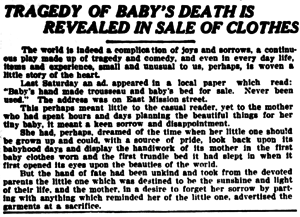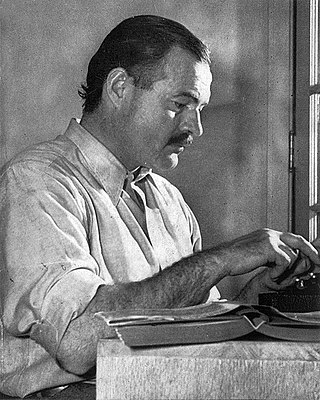
Ernest Miller Hemingway was an American novelist, short-story writer, and journalist. His economical and understated style—which included his iceberg theory—had a strong influence on 20th-century fiction, while his adventurous lifestyle and public image brought him admiration from later generations. Hemingway produced most of his work between the mid-1920s and the mid-1950s, and he was awarded the 1954 Nobel Prize in Literature. He published seven novels, six short-story collections, and two nonfiction works. Three of his novels, four short-story collections, and three nonfiction works were published posthumously. Many of his works are considered classics of American literature.
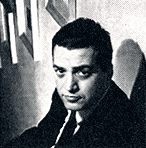
Alfred Bester was an American science fiction author, TV and radio scriptwriter, magazine editor and scriptwriter for comics. He is best remembered for his science fiction, including The Demolished Man, winner of the inaugural Hugo Award in 1953.

Joe William Haldeman is an American science fiction author.
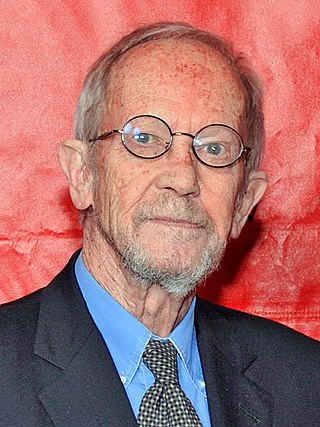
Elmore John Leonard Jr. was an American novelist, short story writer, and screenwriter. His earliest novels, published in the 1950s, were Westerns, but he went on to specialize in crime fiction and suspense thrillers, many of which have been adapted into motion pictures. Among his best-known works are Hombre, Swag, City Primeval, LaBrava, Glitz, Freaky Deaky, Get Shorty, Rum Punch, Out of Sight and Tishomingo Blues.
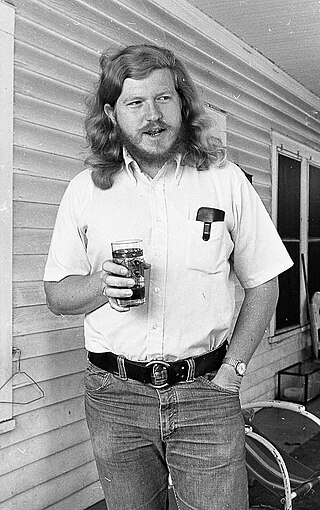
Karl Edward Wagner was an American writer, poet, editor, and publisher of horror, science fiction, and heroic fantasy, who was born in Knoxville, Tennessee and originally trained as a psychiatrist. He wrote numerous dark fantasy and horror stories. As an editor, he created a three-volume set of Robert E. Howard's Conan the Barbarian fiction restored to its original form as written, and edited the long-running and genre-defining The Year's Best Horror Stories series for DAW Books. His Carcosa publishing company issued four volumes of the best stories by some of the major authors of the so-called Golden Age pulp magazines. He is possibly best known for his creation of a series of stories featuring the character Kane, the Mystic Swordsman.

Flash fiction is a brief fictional narrative that still offers character and plot development. Identified varieties, many of them defined by word count, include the six-word story; the 280-character story ; the "dribble" ; the "drabble" ; "sudden fiction" ; "flash fiction" ; and "microstory".
"Hills Like White Elephants" is a short story by Ernest Hemingway. It was first published in August 1927, in the literary magazine transition, then later in the 1927 short story collection Men Without Women. Later the story was adapted for film in 2002. "Hills Like White Elephants" is a short 38-minute film; British actor Greg Wise played The American.
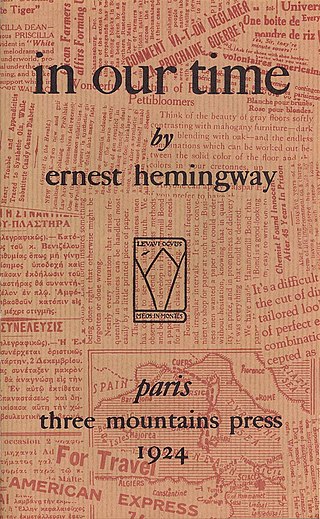
In Our Time is the title of Ernest Hemingway's first collection of short stories, published in 1925 by Boni & Liveright, New York, and of a collection of vignettes published in 1924 in France titled in our time. Its title is derived from the English Book of Common Prayer, "Give peace in our time, O Lord".

Across the River and Into the Trees is a novel by American writer Ernest Hemingway, published by Charles Scribner's Sons in 1950, after first being serialized in Cosmopolitan magazine earlier that year. The title is derived from the last words of U.S. Civil War Confederate General Thomas J. "Stonewall" Jackson: “Let us cross over the river and rest under the shade of the trees.”

The iceberg theory or theory of omission is a writing technique coined by American writer Ernest Hemingway. As a young journalist, Hemingway had to focus his newspaper reports on immediate events, with very little context or interpretation. When he became a writer of short stories, he retained this minimalistic style, focusing on surface elements without explicitly discussing underlying themes. Hemingway believed the deeper meaning of a story should not be evident on the surface, but should shine through implicitly.

Valentin Grigoryevich Rasputin was a Soviet and Russian writer. He was born and lived much of his life in the Irkutsk Oblast in Eastern Siberia. Rasputin's works depict rootless urban characters and the fight for survival of centuries-old traditional rural ways of life, addressing complex questions of ethics and spiritual revival.

The Best American Short Stories yearly anthology is a part of The Best American Series published by Houghton Mifflin Harcourt. Since 1915, the BASS anthology has striven to contain the best short stories by some of the best-known writers in contemporary American literature.
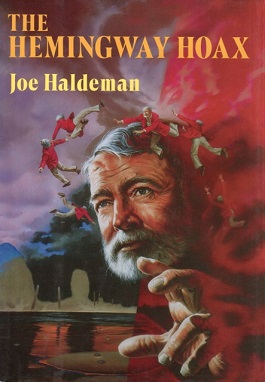
The Hemingway Hoax is a short novel by science fiction writer Joe Haldeman. It weaves together a story of an attempt to produce a fake Ernest Hemingway manuscript with themes concerning time travel and parallel worlds. A shorter version of the book won both a Hugo Award and a Nebula Award for Best Novella in 1991.

"Big Two-Hearted River" is a two-part short story written by American author Ernest Hemingway, published in the 1925 Boni & Liveright edition of In Our Time, the first American volume of Hemingway's short stories. It features a single protagonist, Hemingway's recurrent autobiographical character Nick Adams, whose speaking voice is heard just three times. The story explores the destructive qualities of war which is countered by the healing and regenerative powers of nature. When it was published, critics praised Hemingway's sparse writing style and it became an important work in his canon.
Peter Orner is an American writer. He is the author of two novels, two story collections and a book of essays. Orner holds the Professorship of English and Creative Writing at Dartmouth College and was formerly a professor of creative writing at San Francisco State University. He spent 2016 and 2017 on a Fulbright in Namibia teaching at the University of Namibia.

"Indian Camp" is a short story written by Ernest Hemingway. The story was first published in 1924 in Ford Madox Ford's literary magazine Transatlantic Review in Paris and republished by Boni & Liveright in Hemingway's first American volume of short stories In Our Time in 1925. Hemingway's semi-autobiographical character Nick Adams—a child in this story—makes his first appearance in "Indian Camp", told from his point of view.

Six-Word Memoirs is a project and book series created by the U.S. based online storytelling magazine Smith Magazine.

Larry Smith is an American author and editor, and publisher of Smith Magazine. He is best known for developing the best-selling book series Six-Word Memoirs, a literary subgenre that took on a life of its own in popular culture as publications began holding reader contests and publishing the results. The form has been described as "American haiku." Smith credits Ernest Hemingway's reputed shortest story, "For sale: baby shoes, never worn", with inspiring the viral literary movement.
On Writing is a story fragment written by Ernest Hemingway which he omitted from the end of his short story, "Big Two-Hearted River", when it was published in 1925 in In Our Time. It was then published after Hemingway's death in the 1972 collection The Nick Adams Stories.
Micro-SFP (µSFP) describes an ultra-short science-fiction story written for the specific purpose of capturing inventive ideas for product or service innovations. It is a combination of three concepts, first science-fiction prototyping, second flash fiction and finally, Twitter and texting.

